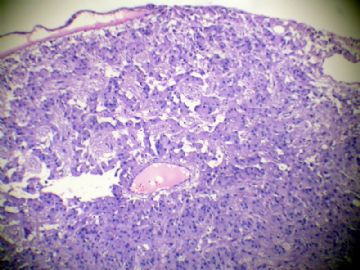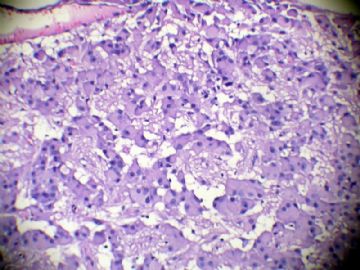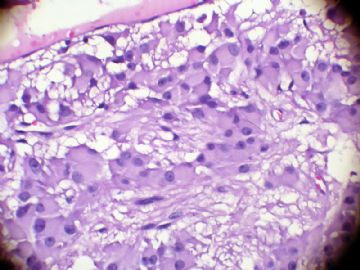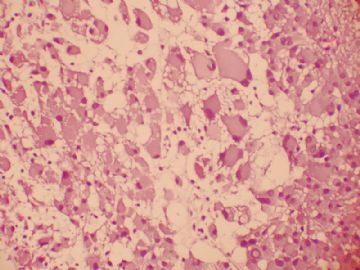| 图片: | |
|---|---|
| 名称: | |
| 描述: | |
- 左侧脑室占位
-
This is WHO grade I subependymal giant cell astrocytoma, which does not have to be associated with tuberous sclerosis in the patient at the time of diagnosis. One differential diagnosis is gangliocytoma, but I doubt it is. Is there perivascular inflammation, necrosis or mitotic figure? Is there formation of eosinophilic granular bodies?

聞道有先後,術業有專攻























